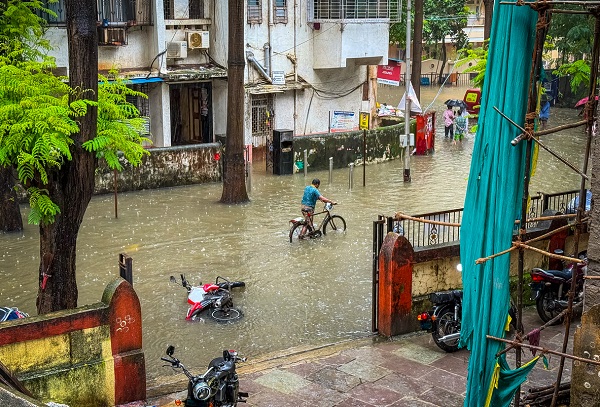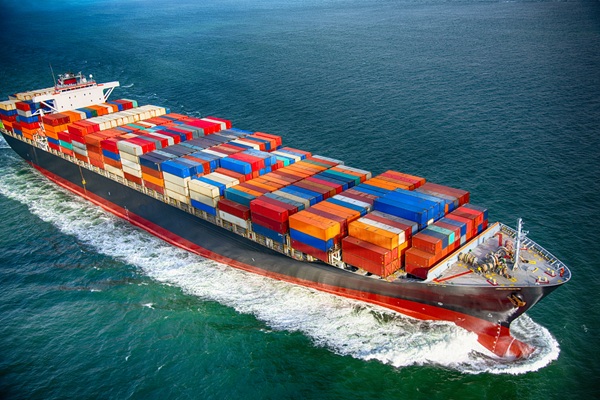.png)
Mumbai’s Addiction to Apathy
We call it resilience. In truth, it’s addiction, the dangerous habit of enduring neglect until survival itself becomes the city’s only virtue.

Kalyani Srinath, a food curator at www.sizzlingtastebuds.com, is a curious learner and a keen observer of life.
August 30, 2025 at 2:18 PM IST
Every monsoon, Mumbai collapses on cue. The rains arrive, and with them the familiar choreography: flooded railway tracks, waterlogged underpasses, stranded buses, and tired images of citizens wading through brown water. Schools shut, trains falter, flights are delayed. By evening, the news channels roll out their annual monsoon coverage, while social media sighs at “Mumbai spirit.”
But spirit is a comforting lie.
What we call resilience is, in fact, resignation. This city is addicted, not to opportunity alone, but to a cycle of dysfunction and survival. We endure instead of demanding change. And in enduring, we excuse the failures of those who govern us.
Infrastructure of Lies
The decay is no secret. Drainage projects remain unfinished two decades after the catastrophic 2005 floods. The much-advertised BRIMSTOWAD plan limps along in parts, while the rest is buried under delays, tenders, and red tape. Every year, new declarations promise a “monsoon-ready” city. Every year, those declarations dissolve with the first downpour.
Beyond floods, the pattern repeats. Bridges collapse or are marked unsafe, footpaths are death traps, hoardings fall with fatal consequences, and potholes swallow bikers whole. The familiar cycle plays out: outrage, silence, and then amnesia. Administrators are never held accountable because citizens rarely demand it.
Transport is no better. For nearly 20 years, Mumbai has been sold the dream of a metro that would transform the commute. Yet today, all we have are scattered, incomplete lines and barricaded roads. Metro Line 3, once hailed as the breakthrough, is still perpetually “almost complete.” Costs have doubled, deadlines have collapsed, and other Indian cities—Delhi, Bengaluru, Hyderabad—have raced ahead with functional metro systems.
Meanwhile, Mumbai remains chained to its overburdened local trains, carrying 7.5 million people daily in conditions often described as worse than livestock transport. Every year, hundreds die on tracks, not in accidents, but in routine overcrowding. And yet, no leader treats this as an emergency. Because we don’t either. We’ve learned to normalise preventable deaths. For a city that fuels so much of India’s economy, this is not resilience. It is neglect institutionalised.
When the rains subside, Mumbai finds other ways to paralyse itself. High-decibel festivals engulf the city in processions, blocked roads, and sleepless nights. Ambulances are held hostage to traffic chaos. Noise levels cross every safety threshold. For days, the functions of a modern city are all but suspended.
Nobody objects to cultural joy. The indictment lies in the absence of balance — administrators surrendering public welfare to spectacle, citizens consenting with silence. Every disruption becomes “normal,” every inconvenience absorbed. Step back, and it is astonishing to realise how much we have adjusted to dysfunction.
Perhaps the greatest tragedy of Mumbai is not failed administration, but muted citizenship.
The myth of resilience is our greatest curse. We celebrate it as a virtue, but in truth, it is our prison. Rains flood living rooms? We make jokes. Potholes kill? We share memes. Festivals overwhelm us? We admire “spirit.” Each time we adjust, we make negligence acceptable. Each time we cope, we shield leaders from accountability.
This silence has become governance policy. Administrators know that outrage will not last beyond the rain. They know citizens will complain but continue. That economy will trump quality of life. That no elections are fought on drainage, on transport dignity, on road safety. And so we remain trapped in an endless loop—promises, collapse, survival, forgetfulness.
Unlike sudden disasters, Mumbai bleeds slowly, invisibly. Collapse here is not a single catastrophic event, but a thousand daily cuts. Hours lost in traffic because of delayed metro projects. Breath wasted on polluted air mixed with untreated effluents. Families grieving deaths by potholes, electrocution from exposed wires, or crowd crushes at stations.
The greatest irony is that Mumbai still sustains dreams. Millions come here chasing opportunity. For the aspirational poor, the city still seduces with promise, only to consume them in unsafe housing and unbearable commutes. For the middle class, it offers pay checks, but at the cost of living in a city whose costs mount in time, health, and sanity.
What keeps us going is the lie that survival itself is a badge of honour. But survival is not dignity. And resilience is not progress.
Writing about Mumbai’s failures often feels cathartic — words spilled into the void, destined to be forgotten when the rains recede. But catharsis cannot be the end point. Addiction only stops with an intervention.
That intervention must come not from administrators, who have perfected the art of promises and partial delivery, but from citizens. From those unwilling to excuse another cycle of broken infrastructure, unwilling to accept silence as civic identity. Intervention must mean organised memory—keeping outrage alive beyond the monsoon. Litigation, collective campaigns, civic watchdogs that demand accountability for every rupee promised and undelivered.
The time has come to refuse “resilience” as praise and expose it as failure. The time has come to stop sleepwalking through dysfunction and confront our addiction to apathy for what it truly is: the slow death of Mumbai.
The Reckoning
Cities do not usually die overnight. They die as Mumbai is dying — slowly, invisibly, while their citizens grin and bear it. We are not a city bouncing back from crisis. We are a city rehearsing crisis as routine.
And unless something ruptures this cycle, unless citizens demand more than just survival, this addiction will become our death knell.
Mumbai has given India fortunes, fueled industries, and carried dreams on its overburdened back. But for its own people, it has slowly stripped away dignity. The choice before us is no longer about weathering another monsoon with courage. The choice is whether to keep calling survival a virtue or to finally demand a life worth living.
Because apathy, not rain or noise, is what is killing Mumbai. And unless we stop romanticising it, the city of dreams will keep carrying on in half-life — surviving, but never truly living.



